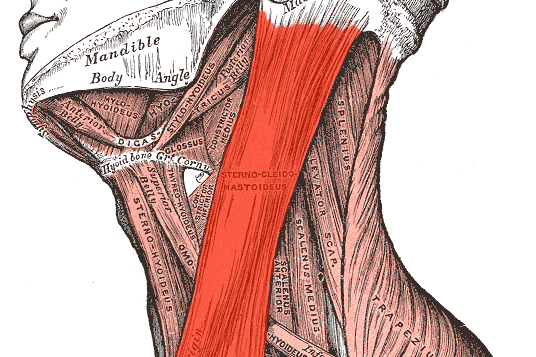SCM- The abbreviation your health depends upon!
Posted Jul 19, 2021 at 09:24
Posted Jul 19, 2021 at 09:24

SCM stands for Sternocleidomastoid.
It is one of the muscles that first time I heard its name I thought I would never be able to pronounce it. Yet, it is one of the most important muscle in our body and one / or actually a pair of muscles that I end up treating a lot in the clinic every day.
What is this sounding like from some sci fi movie muscle then?
The sternocleidomastoid is a two head muscle that bears attachments to the manubrium of the sternum (hence sterno-), the clavicle (-cleido-), and the mastoid process of the temporal bone (-mastoid.) The name does make more sense when put that way, right? There are two of these long muscles on each side of the neck running from the mastoid process (behind the ear area) and toward the sternoclaviular joint-the part of your sternum where the clavicles meet.
It plays important functions. Primarily, it flexes rotates neck to the opposite side, flexes neck to the same side and when both muscles contract at the same time, they flex head forward towards the chest.
But that�s not all the roles the muscle plays in our body. The sternocleidomastoids being part of multiple fascia lines play an important role in neck stability, jaw, cranium and shoulder function. With our lives being spent more and more in flexion with attention being at the front of the body due to screens, work, hobbies, sternocleidomastoids tighten and shorten contributing massively to forward head posture. The fascial sling connecting the sternocleidomastoids to the occipital region my be a source of pain at the back of your head and neck. It can also affect the other cranial bones and because it exerts a strong pull on the temporal bone it can posteriorly rotate it leading to numerous problems ranging from headaches, jaw problems and even further down the body even to problems with feet.
If that is not enough to see how important the sternocleidomastoids are when we look at the symptoms that trigger points in these muscles can cause the list has over 20 positions on it. It includes problems from back and front of the head pain, through dry cough, ringing in the ear, chest pains, migraines, runny nose, TMJ pain just to name few.
Although the front of the neck is not area that pops into our mind when we think about stretches or massage, there are some very important muscles and structures in there that play crucial role in how the rest of our body is functioning.